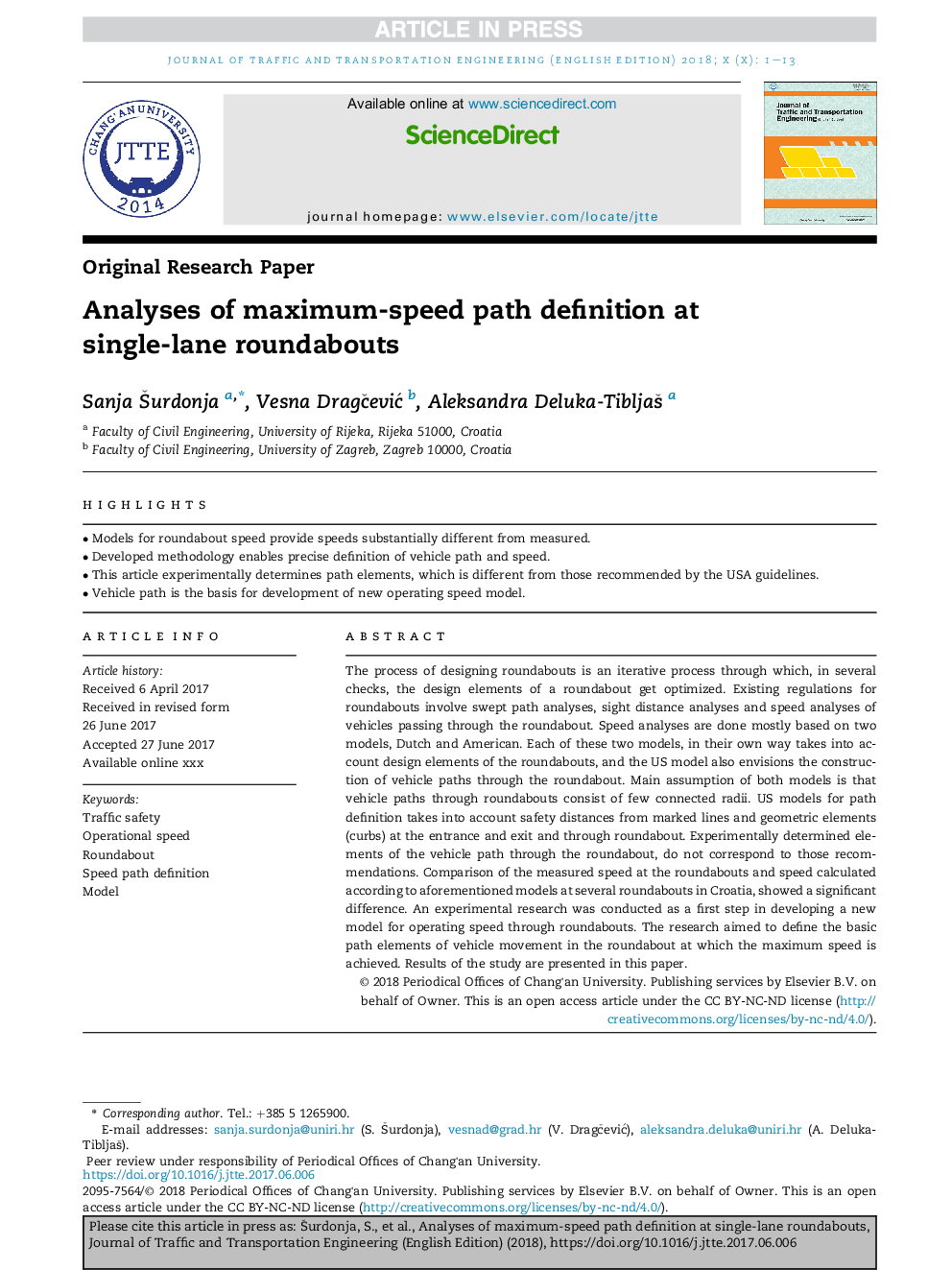| Article ID | Journal | Published Year | Pages | File Type |
|---|---|---|---|---|
| 6756707 | Journal of Traffic and Transportation Engineering (English Edition) | 2018 | 13 Pages |
Abstract
The process of designing roundabouts is an iterative process through which, in several checks, the design elements of a roundabout get optimized. Existing regulations for roundabouts involve swept path analyses, sight distance analyses and speed analyses of vehicles passing through the roundabout. Speed analyses are done mostly based on two models, Dutch and American. Each of these two models, in their own way takes into account design elements of the roundabouts, and the US model also envisions the construction of vehicle paths through the roundabout. Main assumption of both models is that vehicle paths through roundabouts consist of few connected radii. US models for path definition takes into account safety distances from marked lines and geometric elements (curbs) at the entrance and exit and through roundabout. Experimentally determined elements of the vehicle path through the roundabout, do not correspond to those recommendations. Comparison of the measured speed at the roundabouts and speed calculated according to aforementioned models at several roundabouts in Croatia, showed a significant difference. An experimental research was conducted as a first step in developing a new model for operating speed through roundabouts. The research aimed to define the basic path elements of vehicle movement in the roundabout at which the maximum speed is achieved. Results of the study are presented in this paper.
Keywords
Related Topics
Physical Sciences and Engineering
Engineering
Aerospace Engineering
Authors
Sanja Å urdonja, Vesna DragÄeviÄ, Aleksandra Deluka-TibljaÅ¡,
